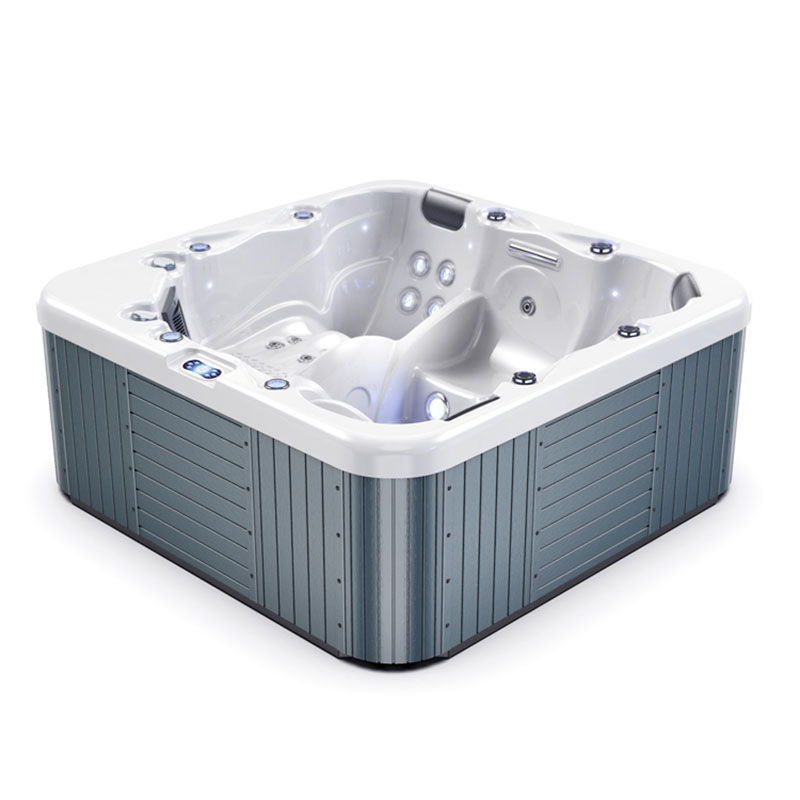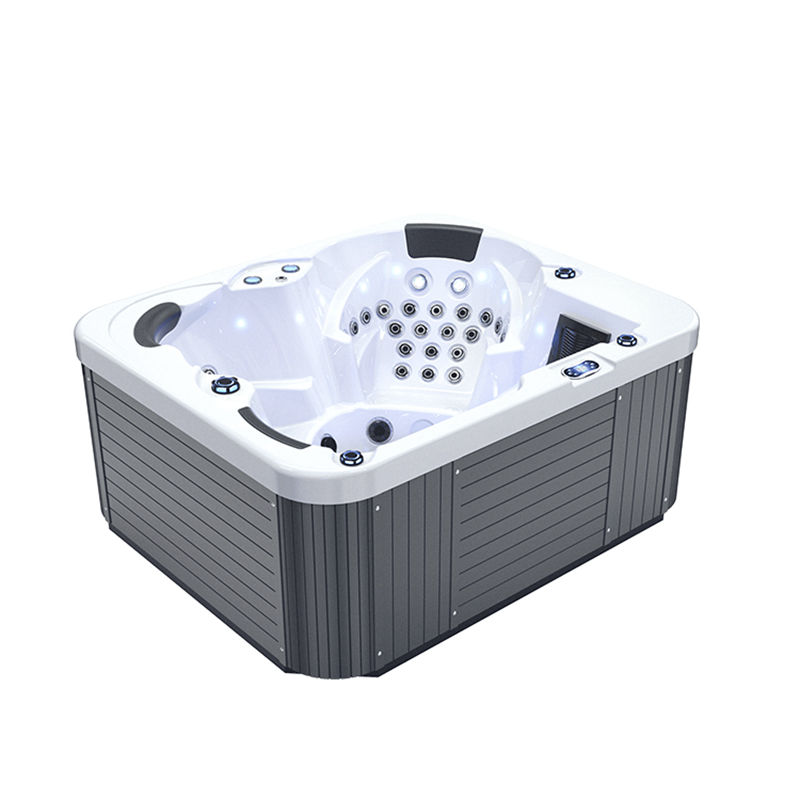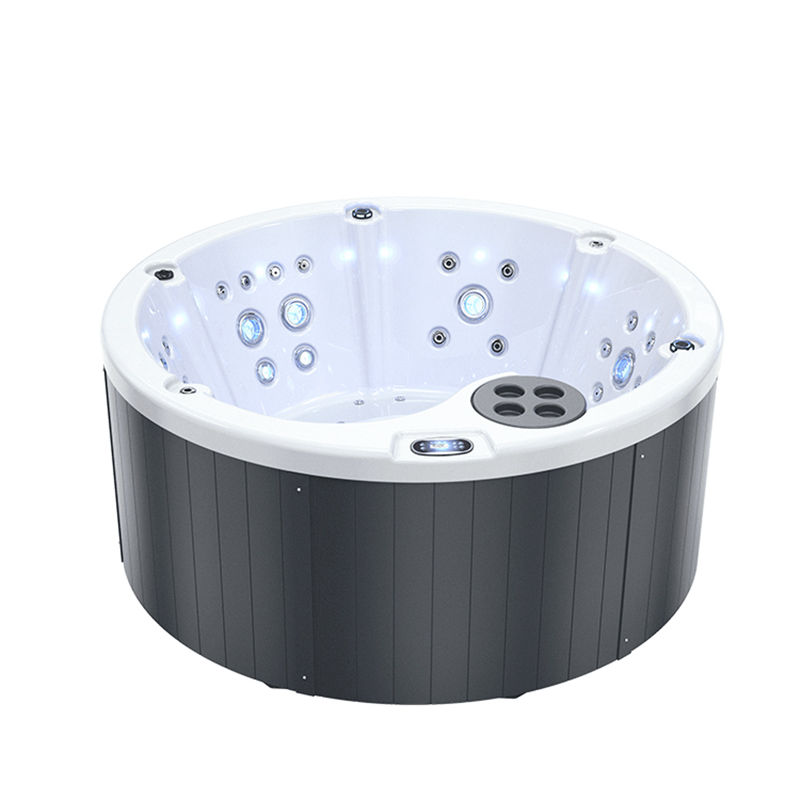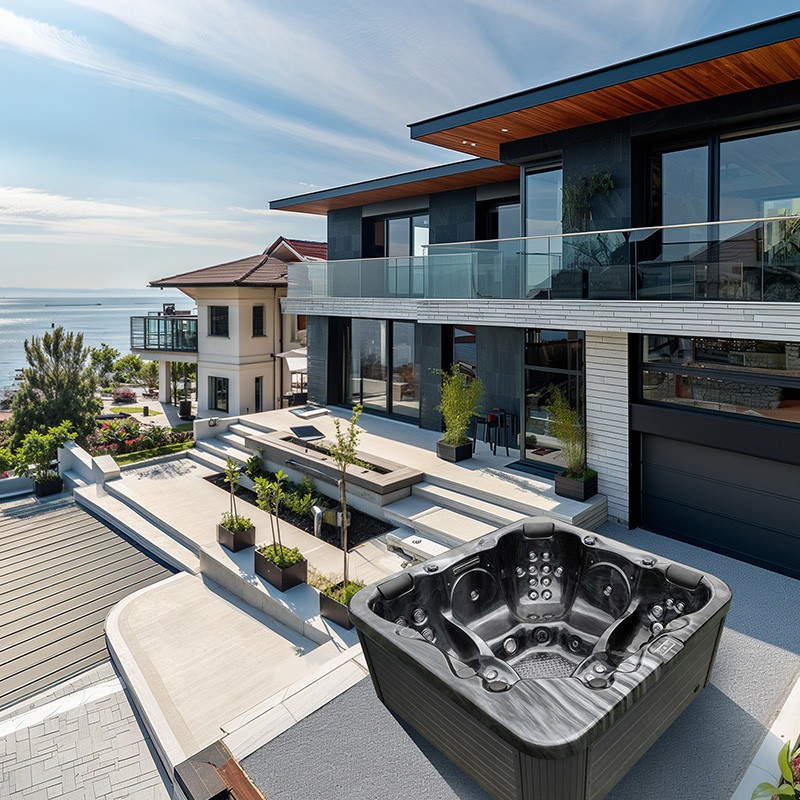Whirlpool spa hot tubs are popular for their comfortable massage and warming experience, making them an essential tool for relaxation and wellness, whether in homes, hotels, or rehabilitation centers.
Regular inspections of whirlpool spa hot tubs are essential to ensure safe use, extend the life of the equipment, and maintain water quality.
This article will detail the key indicators to look for when inspecting a whirlpool spa hot tub, including water temperature and quality, to help users fully understand scientific maintenance methods.
Why should you regularly inspect your whirlpool spa hot tub?
Regular inspections of whirlpool spa hot tubs are not only important for user comfort but also for safety and health:
1. Ensure Safety
Whirlpool spa hot tubs involve electrical equipment, heating systems, and water pumps. Prolonged operation or unmaintained operation may lead to risks of electrical leakage, short circuits, or heater failure.
2. Extend Equipment Life
Regular maintenance and inspections of key indicators can reduce component wear, pipe blockages, and nozzle damage, extending the life of your whirlpool spa hot tub.
3. Ensure Healthy Water Quality
Long-term use of a whirlpool spa hot tub can accumulate bacteria and impurities. Regular water quality testing and disinfection are important measures to prevent skin problems and infections.
4. Improve User Comfort
A properly functioning whirlpool spa hot tub provides stable water temperature and massage effects, avoiding discomfort caused by clogged jets or damaged pumps.
What key indicators should I pay attention to when inspecting a whirlpool spa hot tub?
When inspecting a whirlpool spa hot tub, you should focus on multiple aspects, including safety, performance, water quality, energy consumption, and equipment condition. The following are key indicators and considerations.
1. Is the water temperature stable? Why is checking the water temperature important?
Water temperature is a core indicator of the whirlpool spa hot tub user experience and is directly related to user safety:
• Temperature Range
The recommended water temperature for a whirlpool spa hot tub is generally between 37°C and 40°C. Temperatures below 37°C may reduce comfort, while prolonged soaking above 40°C may cause low blood pressure, increased heart rate, and even dizziness.
• Thermostatic System Inspection
Check the heater and thermostat for proper operation, ensuring the water temperature remains within the set range without significant fluctuations.
Pay special attention to the accuracy of the water temperature display to prevent temperature deviations caused by thermostat malfunction.
• Water Temperature Sensor Status
Regularly check the sensor for sensitivity to prevent the temperature from failing to automatically adjust when it is too high or too low.
2. Is the water quality safe? What aspects should be considered during a water quality inspection?
Water quality directly impacts user health, especially those who use the whirlpool, spa, or hot tub for extended periods:
• pH and Disinfectant Concentration
The pH should be maintained between 7.2 and 7.8. Excessively acidic or alkaline conditions can irritate the skin and eyes.
The concentration of disinfectants (such as chlorine or bromine) must be within a safe range to prevent bacterial growth and water contamination.
• Turbidity and Impurities
Check the water for clarity and the presence of suspended particles or sediment.
Clogged pipes, showerheads, and filters can reduce water flow, diminish the massage effect, and make the water susceptible to bacterial growth.
• Bacteria Testing
For whirlpool spa hot tubs that are used regularly, regularly test water samples to ensure the microbial content in the water is within safe limits.
• Water Circulation System
Check the circulation pump, filter, and showerheads to ensure smooth water flow and prevent stagnant water and contamination.
3. Is the electrical system safe?
A whirlpool spa hot tub involves electrical components such as the heater, water pump, and electric showerheads, making safety inspections crucial:
• Residual Current Circuit Breaker
Confirm that the tub is equipped with a residual current circuit breaker (RCD/GFCI) and is functioning properly.
Check the electrical cord and plug for wear, deterioration, or moisture.
• Power Load Check
Confirm that the heater and water pump wattage match the household electrical load to prevent overloads that could cause fire or short circuits.
• Heater and Pump Condition
Check the heater for any unusual noises or reduced heating efficiency.
Check that the water pump is running smoothly, with no unusual noises or leaks.
4. Are the pipes and showerheads clear?
The massage effect of a whirlpool spa hot tub depends on the proper functioning of the jets and piping:
• Nozzle Inspection
Regularly inspect the jets for blockage, damage, or misalignment.
Adjust the jet direction to ensure water coverage of critical areas.
• Pipe Cleaning
Long-term accumulation of scale, mineral deposits, or biofilm inside the pipes can reduce water pressure and affect water quality.
Regularly clean the pipes and circulation pump to prevent blockage and uneven water flow.
• Air Bubble System Inspection
Check that the air bubble jets and pump are functioning properly, providing even airflow and no abnormal noise.
5. Energy Consumption and Operational Efficiency
Efficient operation not only saves energy but also extends the life of the equipment:
• Power Consumption Monitoring
Running a whirlpool spa hot tub for extended periods consumes significant amounts of electricity. Check that the power consumption meets design specifications.
High energy consumption may indicate equipment wear or temperature control failure.
• Pump Efficiency
Reduced pump efficiency can result in reduced water flow, poor massage results, and increased power consumption.
• Thermostatic Control Efficiency
Check whether the thermostat can quickly adjust the water temperature to prevent energy waste.
6. Are Disinfection and Maintenance Records Complete?
Regular disinfection and maintenance are key to the long-term use of your whirlpool spa hot tub:
• Disinfection Records
Record the time of each disinfection, the type of chemical used, and its concentration.
Prevent water contamination and bacterial growth.
• Maintenance Cycles
Regularly replace the filter and check the condition of the pump and jets to extend the life of the equipment.
• Cleaning Records
Record the frequency of cleaning the pipes and jets to ensure smooth water flow and massage effectiveness.
7. Are the safety devices in good working order?
Whirlpool spa hot tubs involve high-temperature water and electrical equipment, so safety precautions are particularly important:
• Emergency Power Off
Ensure the emergency power off switch is functional to quickly disconnect the power supply in the event of an accident.
• Anti-slip Measures
Ensure the tub bottom is non-slip and the handrails are secure to prevent slips during use.
• Child and Elder Protection
Install a safety door lock or guardrail to prevent children from entering or the elderly from falling.
Whirlpool Spa Hot Tub Inspection Procedures
• Turn off power first: Before inspecting electrical equipment and the water pump, turn off the power to ensure safety.
• Empty the pool and inspect the pipes: Drain old water and check the pipes for blockages, scale, or leaks.
• Clean the showerheads and filters: Remove the showerheads, clean out impurities, and ensure smooth water flow.
• Add water and test the water quality: Check the pH, disinfectant concentration, and water temperature.
• Start the heater and water pump: Check the thermostat, water pump, and showerhead operation.
• Record inspection results: Record the water quality, electrical, plumbing, and showerhead status for future maintenance.
What indicators should be checked for a whirlpool spa hot tub?
Regularly inspecting the key indicators of a whirlpool spa hot tub is essential to ensure safe use, extend the life of the equipment, and maintain healthy water quality. Key areas of focus include:
1. Water temperature stability: Ensure it remains within the 37-40°C range.
2. Healthy water quality: pH, disinfectant, turbidity, and bacterial control.
3. Electrical safety: Leakage protection, power load, heater, and pump status.
4. Pipeline and nozzle unobstructedness: Ensure water flow and massage effectiveness.
5. Energy consumption and efficiency: Pump efficiency and constant temperature control.
6. Disinfection and maintenance records: Maintain regularity and completeness.
7. Safety features: Emergency power off, anti-slip measures, and child and elderly protection.
Through a scientific inspection process, users can not only enjoy a comfortable whirlpool spa hot tub experience, but also reduce safety risks, extend equipment life, and maintain healthy water quality.
Where is your factory located and can international buyers purchase directly?
Lovia Spa’s factory is based in Guangzhou, China, covering 45,000 square meters with modern production facilities. International buyers can directly purchase from us, reducing costs and securing low-price wholesale deals. We export worldwide with regular shipments from Huangpu Port.
Our company supplies both large distributors and small resellers, offering flexible quotes, customized designs, and professional sales support.








